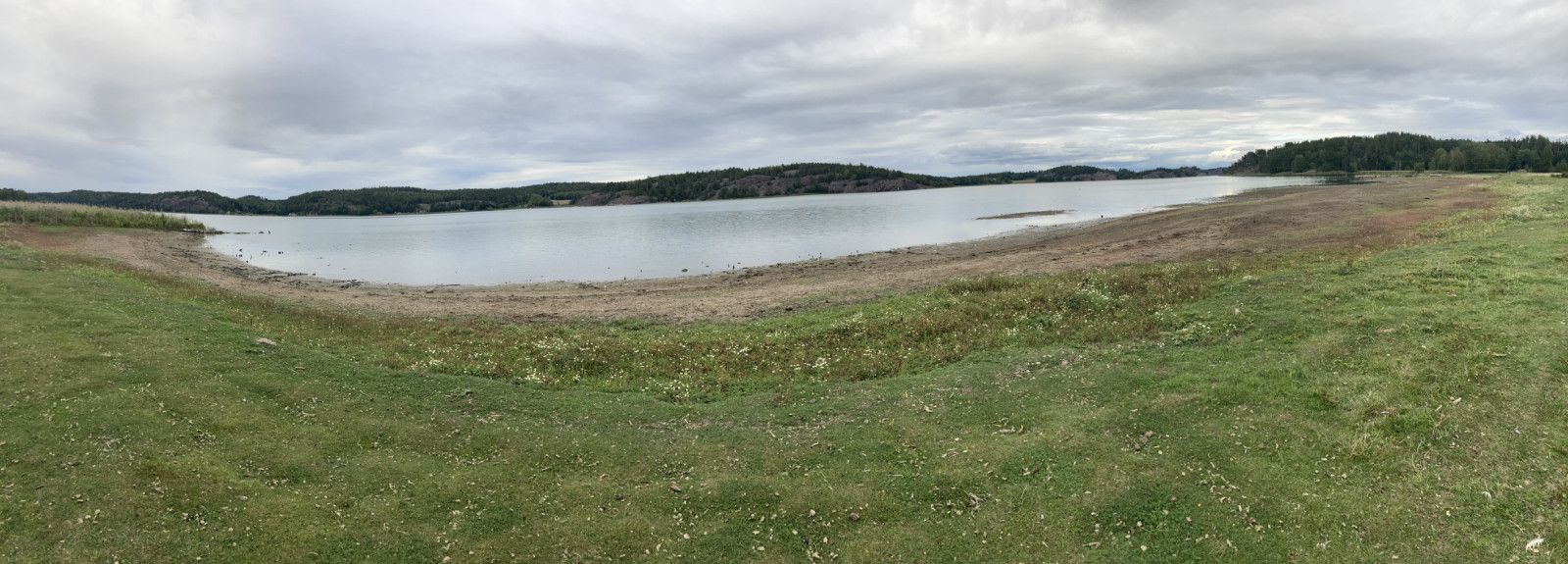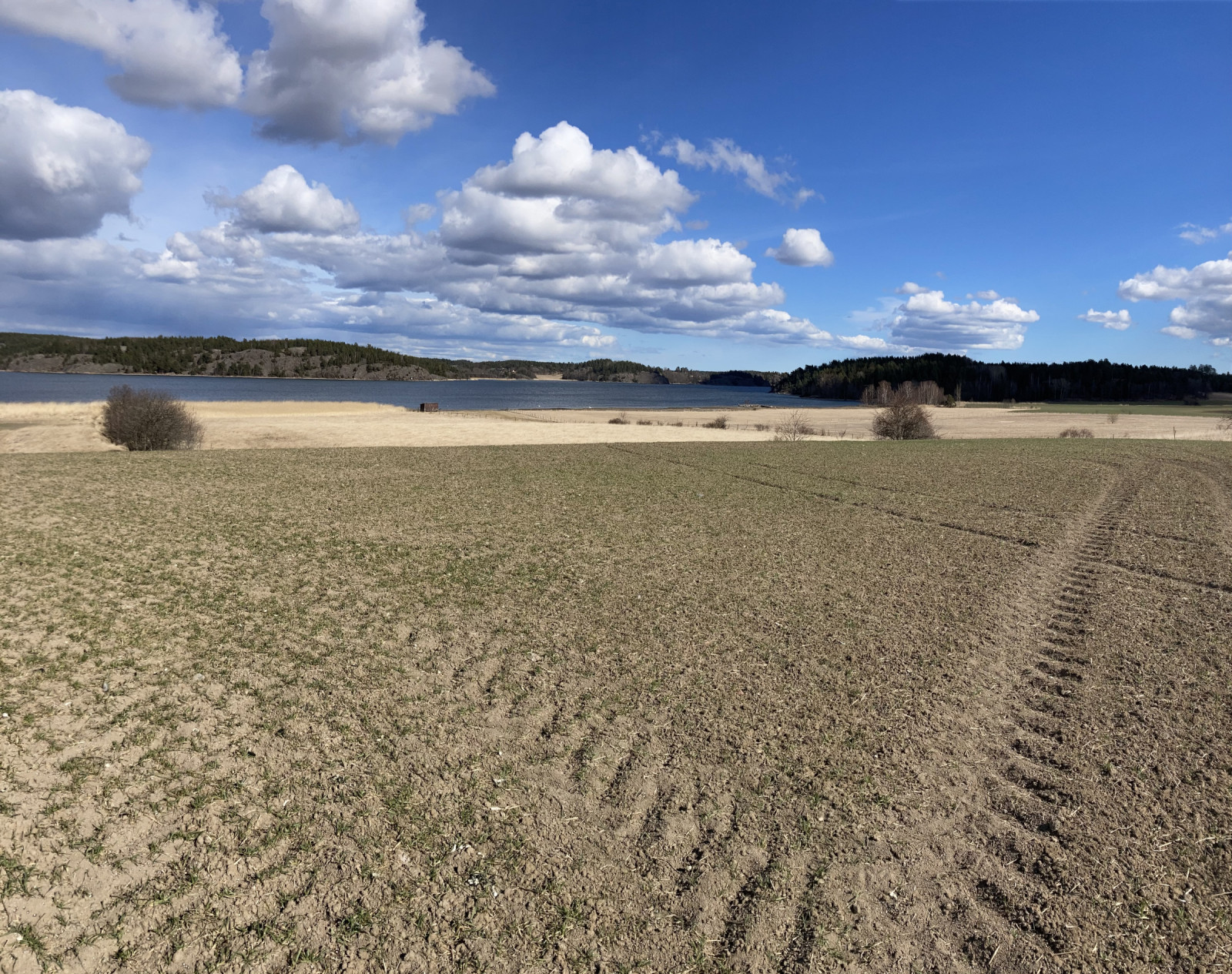Description
The birds start to arrive at Killingholmen in February when the ice starts to loose its grip on the coastal waters. Then ducks start to rest in the shallow parts of the bay; Rață moțată (at most 100) and around 1000 Ferestraș mare can be found. Also the rarer winter ducks like Rață mică, Rață cu cap castaniu, Ferestraș mic, Rață cu cap negru and Ferestraș moțat. A few hundred geese and around 100 Lebădă de iarnă feed on the areas fields and coastal meadows around march. In March the other early spring birds also arrive; Ciocârlie, Porumbel gulerat, Graur and Nagâț. In spring you can find Pițigoi de stuf in the reed beds.
Year round Uliu păsărar, Codalb and Șorecar comun are the common predatory birds. But Acvilă de munte, Erete vânăt and Gaie roșie pass by the area. Most common passerine birds arrive in March/April. Slätbaken is a stopping point for passerine birds, which makes it common to find uncommonly early Ciocârlie de pădure and Sturz de vâsc.
From late February and in March the owls in the area can be heard calling. Huhurez mic Ciuvică and Buhă are sometimes heard. In March more geese start to arrive and not only the common Gâscă canadiană and Gâscă de vară. Also Gârliță mare (at most 67) and Gâscă călugăriță (at most 100). Gâscă de semănătură, Tundra Bean Goose and Gâscă cu cioc scurt are sometimes found. Also Lebădă mică has been observed.
On the coastal meadows large amounts of passerine bird start to rest in the end of March and in April. Fâsă de luncă, Codobatură albă, Cânepar are the most common. Among these Fâsă de stâncă is regularly seen. In the large grassy areas Ciuf de câmp can be found. On the coastal meadows Fluierar de munte, Fluierar de zăvoi, Fluierar cu picioare roșii, Rață fluierătoare, Rață pestriță, Rață lingurar, Fluierar de mlaștină, Ploier auriu, Becațină comună and Corcodel mare. Most common dabbling ducks are found but only Rață mică is numerous (at most 70). At the Torpa damm Rață cârâitoare and Rață sulițar have been seen, along with smaller amounts of other ducks.
In april large amounts of thrushes move past the fields and coastal meadows. Hundreds of Sturz cântător, Sturzul viilor, Cocoșar and Sturz de vâsc are seen. In the end of May and April most birds disappear, except for the breeders.
In May the latest passerine birds, and night active birds arrive. On the fields Erete sur, Șoim călător and Cristel de câmp are found. Pescăruș negricios sometimes rest on the coastal meadows in May. Mugurar roșu often sings here. On the meadows Gâscă călugăriță, Gâscă de vară, Gâscă canadiană, Rață pestriță, Fluierar cu picioare roșii, Nagâț, Corcodel mare, Rață moțată, Rață sunătoare and Lișiță breed. In the area Ciocănitoare pestriță mică, Sfrâncioc roșiatic, Rață mică and Lebădă de iarnă breed. At Storåns river mouth you can observe Pescăraș albastru.
During autumn Hov strandängar becomes better for birding. From July the area is a good site for wading birds such as Nagâț, Culic mare, Prundăraș gulerat mare, Prundăraș gulerat mic, Fluierar de munte, Becațină comună, Ploier auriu, Fluierar cu picioare verzi, Fluierar cu picioare roșii, Bătăuș, Fluierar de mlaștină and Fluierar de zăvoi. These are all common, while Fugaci mic, Fugaci de țărm, Culic mic, Fugaci pitic and Fugaci roșcat are more rare.
Other wetland birds are often found. Among the rarer birds Pescăraș albastru, Pescăriță mare, Gușă vânătă and Egretă mare can be noted. Large amounts of gulls, geese and terns can be found, especially Gâscă de vară which some years have been found as numerous as 3000.
Large amounts of passerine birds are found in the meadow areas. The most numerous passerine birds are Sticlete (250 at most), Rândunică (500 at most), Mărăcinar mare, Pietrar sur, Graur (600 at most). Later in autumn Corcodel mic, Becațină mică, Inăriță cu cioc galben, Corcodel de iarnă, Ferestraș mic and Rață cu cap negru are sometimes found.
Details
Access
Inre Slätbaken is located east of the town of Söderköping. Parking can be found around Hov and several other places. Click on a P in the map for directions to a parking spot.





